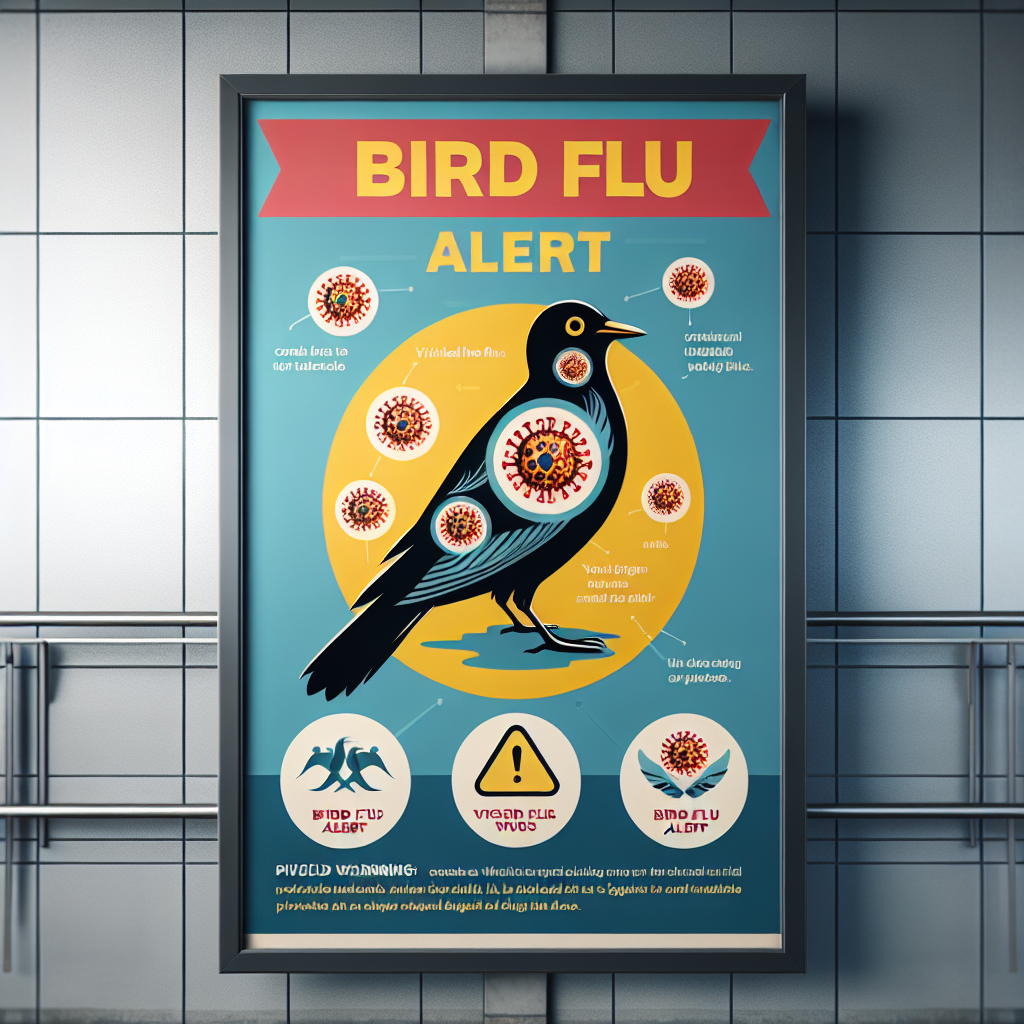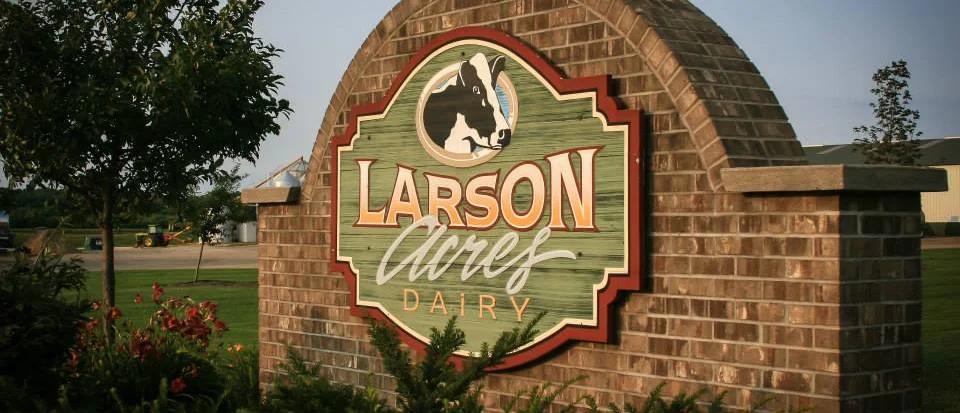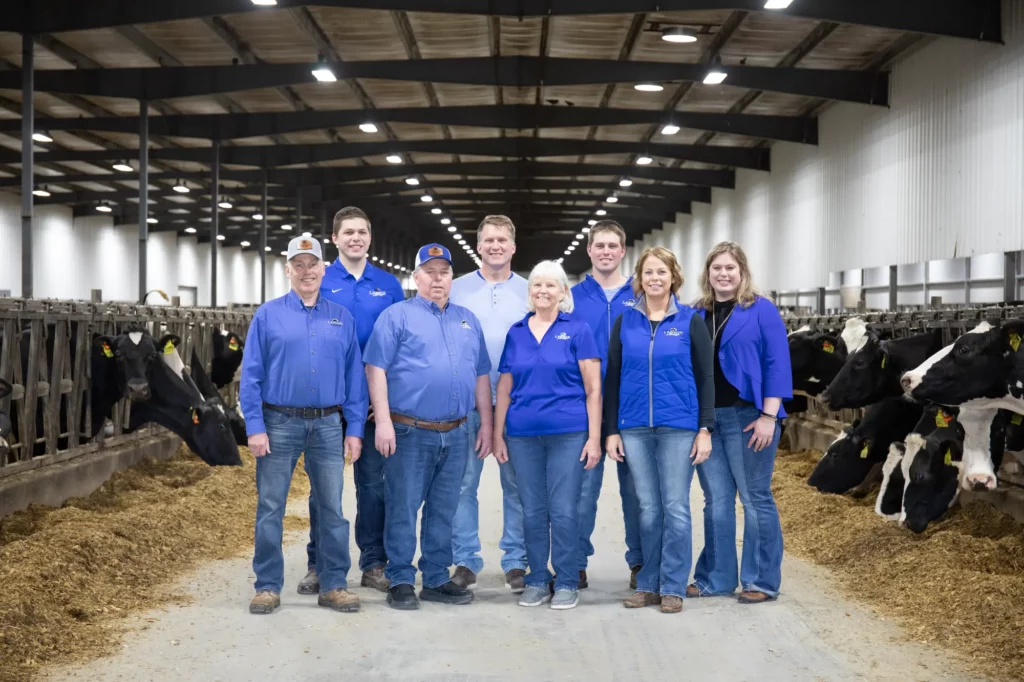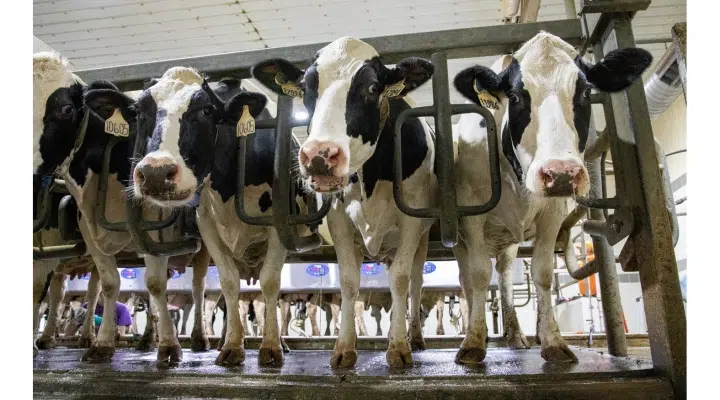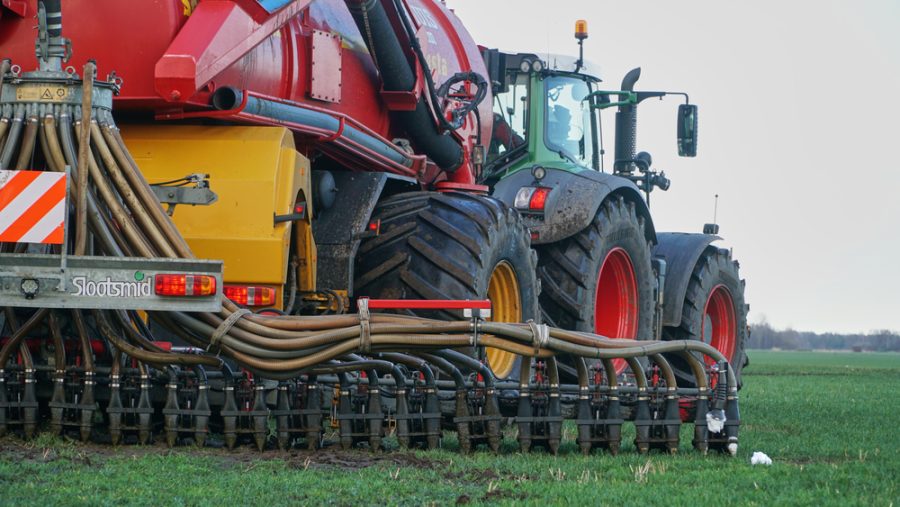Did you know milk from cloned cows might soon be on Canadian shelves without you knowing? Find out what this means for dairy farmers and consumers.
Summary: Imagine pouring a glass of milk from your dairy farm only to discover it might have come from a cloned cow. This unsettling reality is what Dr. Sylvain Charlebois, a respected food and farming expert, warns could soon be the norm in Canada. Charlebois has raised concerns that Health Canada’s recent, low-profile consultations might lead to milk, eggs, and meat from cloned animals appearing on the market without consumers knowing. If you’re a dairy farmer, the impact of this shift could be profound—touching on everything from consumer trust to the ethics of food production. Health Canada is reviewing its policies on commodities obtained from cloned animals, including milk, and these products are classified as “novel foods” under Food and Drug Administration regulations. The interim policy classifies cloned animal feeds as “novel foods” due to technological unknowns. If the interim regulation becomes permanent, dairy producers may face a rapidly changing competitive environment. This controversy has highlighted the importance of transparency, customer knowledge, and balancing innovation with consumer rights. Cloning costs pose a significant threat to conventional dairy production, making obligatory labeling a cornerstone of openness. Dairy farmers must make a critical decision: should they embrace or resist cloning technology?
- Cloned cow milk might soon enter the Canadian market without consumers knowing.
- The shift could impact consumer trust and the ethics of food production.
- Health Canada’s interim policy classifies cloned animal products as “novel foods.”
- The competitive environment for dairy producers may change rapidly if the interim regulation becomes permanent.
- Transparency and obligatory labeling are seen as crucial for maintaining consumer trust.
- Cloning costs could pose significant challenges to conventional dairy production.
- Dairy farmers need to decide whether to embrace or resist cloning technology.
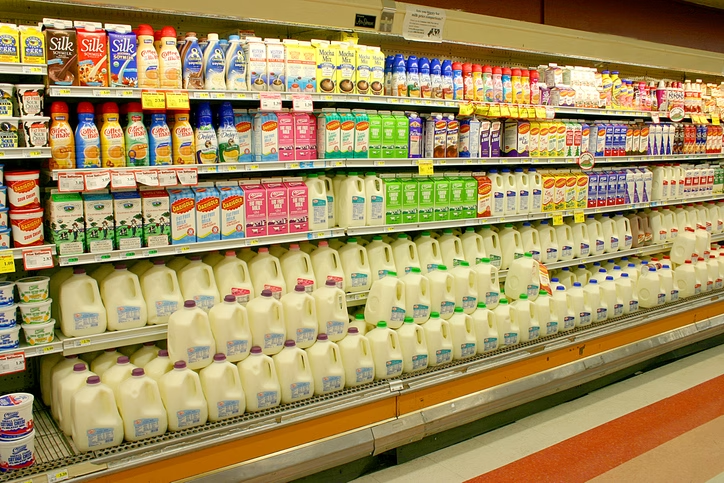
Dr. Sylvain Charlebois, senior director of the Agri-Food Analytics Lab at Dalhousie University in Nova Scotia, warns that cloned cow milk might be sold without customers’ knowledge. This issue could significantly impact your farm and the dairy sector, potentially affecting consumer trust, market dynamics, and regulatory policies. Let’s explore what this means for you and the broader dairy industry.
Health Canada Consultation: The Current State of Cloned Cow Milk
Cloned cow milk is currently unavailable in Canada. Health Canada is still reviewing its policies on commodities obtained from cloned animals, including milk. Until more is known, cloned animal products are classified as “novel foods” under Food and Drug Administration regulations. The public and industry comment process is still underway, and a final decision on distributing and labeling cloned cow milk has yet to be reached.
Health Canada opened the floor for public and business comment, which concluded on May 25. They planned to amend their ‘Policy on foods obtained from cloned animals via somatic cell nuclear transfer (SCNT) and their offspring.’ The interim policy is conservative, classifying cloned animal feeds as ‘novel foods’ due to the technological unknowns. This process thoroughly reviews scientific evidence and public and industry feedback and considers potential risks and benefits. What does this imply for you?
While the policy emphasizes health and safety, claiming that cloned products offer no more danger than conventionally produced animals, staying current with these changes is critical. Many people are concerned about food safety and animal welfare.
The Interim Policy: What It Means for Dairy Farmers
Understanding the interim regulation regarding cloned animal products is crucial for dairy producers. According to this regulation, foods created from cloned animals using somatic cell nuclear transfer (SCNT), a process where the nucleus of a somatic cell is transferred into an egg cell with its nucleus removed, are considered ‘novel food.’ This means that items like milk from cloned cows (and their offspring) are considered novel and untested in the marketplace.
What exactly does this imply for you? This means that, although science may support the safety of these cloned items, there needs to be more clarity about how consumers will accept them. Dairy producers must understand that, even if these products are scientifically safe, consumers may not accept them. Your farm’s reputation may suffer if cloned milk mixes with ordinary milk in the supply chain without proper labeling.
Furthermore, regulatory ambiguity exists since the policy still needs to be consulted on. Suppose the interim regulation becomes permanent and permits the sale of unlabeled cloned milk. In that case, dairy producers may confront a rapidly changing competitive environment. Depending on customer response and market needs, such developments may provide both possibilities and threats.
Is Cloned Cow Milk Safe? Health Canada’s Perspective
Health Canada says that meals derived from cloned animals are classified as “novel foods,” which means they must undergo thorough safety testing before being released to the market. The agency’s interim guideline emphasizes thoroughly evaluating cloned animal products, such as milk, meat, and eggs, to identify possible risks compared to traditionally grown equivalents.
Based on current scientific evidence, the public consultation stage found no discernible differences in safety, health, or environmental effects between cloned and non-cloned items. In its summary, Health Canada said that healthy cloned animals and their offspring do not display new features that would make their products harmful to consume. This is consistent with the judgments reached by other worldwide agencies, such as the US Food and Drug Administration and the European Food Safety Authority, which have confirmed the safety of these goods.
Despite these guarantees, the prospect of cloned goods on the market worries consumers and farmers. It is worth emphasizing that customer acceptability is vital in agriculture. Dairy producers should know how these changes affect customer trust and market dynamics. Your opinion and active involvement in continuing discussions are not just important, but integral to building regulations that reflect safety requirements and public mood.
The Importance of Mandatory Labeling in Dairy Products
Imagine reaching for your favorite milk brand and wondering whether it came from a cloned cow. Without statutory labeling, this may happen. As a dairy farmer, customer trust is not just important; it’s your livelihood, and openness is essential to retaining it. The weight of this responsibility and the potential impact on your operations cannot be overstated.
A food analytics specialist, Dr. Sylvain Charlebois, cautions that customers would only accept cloned animal products with unambiguous labeling. Remember the reaction against genetically engineered salmon? The same might happen with dairy if customers believe they have been deceived. Unlabeled cloned goods may contaminate all dairy. Shoppers know food origins; any uncertainty may prompt them to scrutinize all dairy options, including yours.
Finally, openness and correct labeling are about more than just compliance; they are about maintaining the confidence between you and your customers. Advocating for mandated labeling is critical to preserving the authenticity that distinguishes your goods. Without clear labeling, how can buyers make educated decisions? Keeping your consumers informed and comforted is vital.
Lessons from Genetically Modified Salmon: What Dairy Farmers Can Learn
Consider genetically modified (GM) fish to illustrate the possible concerns with cloned cow milk. Despite safety guarantees from multiple regulatory authorities, AquaBounty’s GM salmon was met with widespread public distrust and commercial rejection. This incident is a warning tale: even if Health Canada approves cloned cow milk, customer confidence is not assured.
The lessons from GM salmon emphasize the importance of openness and unambiguous labeling for conventional dairy farmers. Consumers want to know what they put in their bodies and may only accept items with verified information. This hesitation goes beyond safety to include ethics, naturalness, and trust.
The outcry against GM salmon impacted AquaBounty and the seafood business. Dairy producers should be aware that cloned milk might affect the whole dairy business, not just those who sell cloned goods. Staying educated, clearly declaring your opinion, and communicating openly with your clients will be critical as the controversy over cloned cow milk continues. Being proactive may help you retain customer confidence and defend your farm’s image, but it’s also about the collective responsibility and shared consequences for the entire dairy industry.
Consumer Perception: The Potential Impact on Your Dairy Farm
This is where things may get complex for dairy producers. Have you considered how your consumers might respond if they discovered their milk originated from a cloned cow? Imagine explaining this to customers who may still be concerned despite assurances from Health Canada and scientific authorities. The response might be comparable to that experienced by manufacturers of genetically modified organisms (GMOs). It’s a difficult position to be in—balancing innovation with customer trust.
Let’s be honest: today’s customers are more aware and concerned about where their food comes from. They can influence market dynamics. Suppose people believe cloned animal products are unnatural or harmful. In that case, dairy producers may need more scientific proof to maintain and grow their client base. You may have to devote more time and money to educate your clients, or worse, lose them to rivals that use traditional agricultural practices.
The story of genetically engineered fish is a cautionary tale. Despite being confirmed safe, retailers immediately rejected the product due to customer concerns. Would you want to explore comparable waters? The stakes are high, and it may be up to you to push for clear labeling and open processes to develop and maintain customer confidence. The path ahead may seem frightening, but knowing these dynamics can help you prepare for what comes next.
Cloning Costs: Will They Lower Retail Prices?
Dairy producers must strike the right balance between innovation and customer trust. While cloning technology may provide new opportunities, its uncertain reception by consumers might represent a substantial danger to conventional dairy production. As genetically engineered salmon drew criticism, cloned cow milk may face comparable public scrutiny, making obligatory labeling a cornerstone of openness.
Furthermore, the expense of cloning is not insignificant. Cloning is still costly, and assertions that technology would lower manufacturing and retail costs are questionable. Farmers may need convincing proof of cost reductions to avoid additional financial burdens, exacerbating an already complex economic picture.
Finally, Health Canada’s response to this problem will pave the way for future dairy farming operations in Canada—failure to account for consumer preferences and rights damages public confidence while jeopardizing conventional dairy farmers’ livelihoods. As the business changes, remaining knowledgeable and active about these regulations becomes more critical. Are you prepared to manage these changes?
The Future of Dairy Farming: Embracing or Resisting Cloning Technology?
As a dairy farmer, you must make a critical decision: should you use cloning technology or conventional methods? Cloning promises to increase herd productivity by mimicking each cow’s most outstanding qualities. This might result in increased milk outputs, improved disease resistance, and more efficiency. However, the technique raises ethical and practical difficulties, such as the high prevalence of fatal congenital impairments in cloned animals, which may influence the public image of the dairy sector.
Furthermore, cloning costs are significant, and these expenditures may not result in decreased retail pricing. This presents a hurdle in competing with traditional dairy products. Introducing cloned items to the market may result in a public reaction comparable to mistrust regarding genetically engineered species. Organic and organically produced dairy products remain popular among customers due to their perceived transparency and authenticity.
Finally, selecting whether to use cloning technology requires considering consumer views, regulatory environments, and practical ramifications for farm management. Continued communication among the agricultural community is critical for managing these changing difficulties. Whether you support cloning or prefer tradition, the future of dairy farming is in the hands of people who care for the fields and cows daily.
The Bottom Line
Dairy producers in Canada are at a crossroads as they consider the possibility of cloned cow milk entering the market. Health Canada’s conditional support and requests for obligatory labeling point to a fundamental change in the dairy business, affecting production costs, customer trust, and market dynamics. Transparency, customer knowledge, and balancing innovation with consumer rights are critical. Farmers must decide whether to use cloning technology or stick with conventional ways, ensuring that future dairy farming innovations respect technical breakthroughs and customer confidence.








